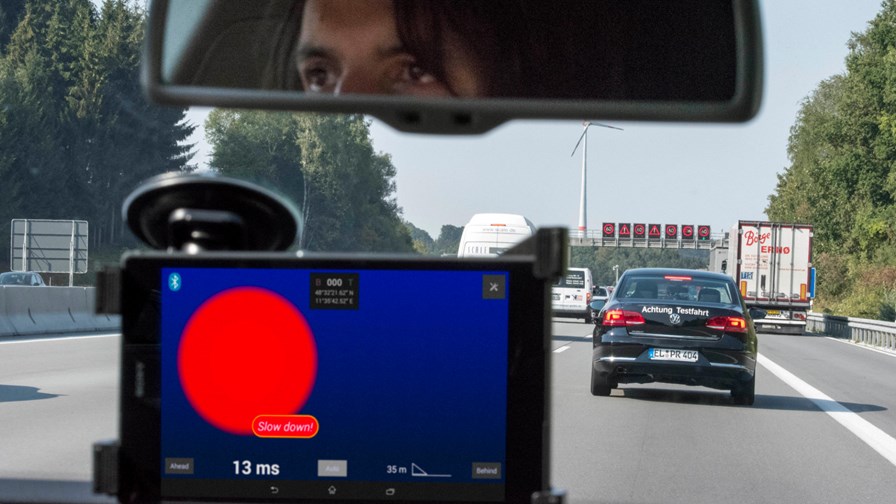
© Continental
- Car2MEC project funded by the Bavarian Ministry for Economic Affairs
- Partners include Deutsche Telekom, Nokia and Continental
- Connected driving technology tested on the A9 autobahn
- 12 months of testing reduced latency to 30ms, somewhat short of the 20ms target
Deutsche Telekom and partners say they have successfully concluded their tests of connected driving technology on the A9 Digital Test Track in Germany. The Car2MEC project was funded and set up by the Bavarian Ministry for Economic Affairs back in March 2016 (read our original report here), with the goal being to gain insights into the value of MEC (Multi-access Edge Computing) for connected driving. It investigated both the technology architecture and the economic business case.
The telco, along with Continental, Fraunhofer ESK, MHP and Nokia, tested a number of different use cases on the A9 autobahn, including emergency warning, end of traffic jam alerts, variable speed limit assistant and HD maps. Deutsche Telekom deployed two locally separated MEC installations along the A9, sharing resources with the existing live LTE network. Over a 12 month period, numerous test drives enabled the group to assess MEC technology in a real-world environment.
“The project results validate the performance of edge computing over our 4G networks as a potential enabler for automotive cases that require low latency and ultra-high reliability," said Alexander Lautz, SVP for 5G at Deutsche Telekom. "Going forward, we will continue to collaborate with partners in the automotive sector on the evolution of the technology and its application in connected and automated driving solutions that will deliver the best driving experience.”
Nokia supplied the MEC technology for the trial and reported that testing confirmed that time critical information can be delivered from one car to another in less than 30ms over an LTE network combined with an MEC-based edge cloud. Worth noting that the plan back in 2016 was to reduce this time to just 20ms… so does the actual 30ms mean the tests were “successfully concluded”? There’s either still some more work to be done here, or the industry has to rethink its expectations.
“The results from this project mark a big step forward on the way to safe and automated driving,” said Uwe Puetzschler, Car2MEC project lead and head of Car2X at Nokia. “We have demonstrated that the Edge Cloud on top of 4G and 5G networks allows to deploy distributed applications that meet the requirements of the automotive industry in terms of latency and reliability. This will accelerate a commercial deployment of the technology.”
Meanwhile, Continental says it is currently working on a vehicle architecture that supports MEC connectivity. Fraunhofer ESK provided hybrid communication units, compatible with the ETSI ITS specifications, with a distributed messaging service deployed on the MEC edge nodes to enable the necessary low-latency connectivity between vehicles and local services.
“While the edge cloud improved end-to-end latency by more than 20ms, the 4G radio access network is still a limiting factor for more demanding future services,” said Karsten Roscher, senior scientist at Fraunhofer ESK. “However, we believe the combination of edge cloud and 5G will shape a completely new landscape of connected and distributed applications.”
Email Newsletters
Sign up to receive TelecomTV's top news and videos, plus exclusive subscriber-only content direct to your inbox.




